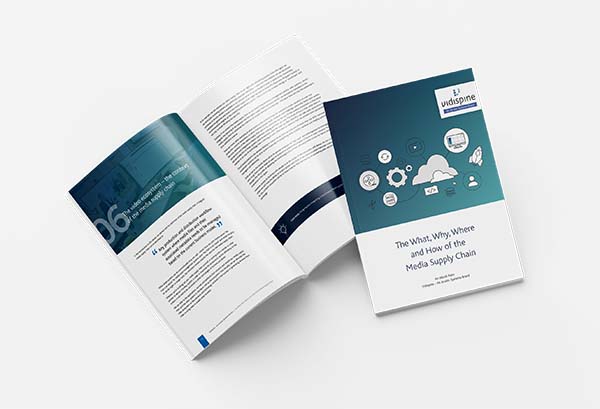
Media Supply Chain and Rights & Monetization
Following on from part two of this blog post series, delving into the What, Where, and How of the Media Supply Chain and focusing on a number of peripheral topics.
In the previous article we looked at metadata, focusing mainly on two of the three types of metadata, namely descriptive and structural. In this article, we’re going to start by looking at an important example of the third type of metadata – administrative - specifically, IP (intellectual property), and rights management.
Enabling An Effortless Flow Of Information
IP and rights management isn’t typically considered to be an integral part of a media supply chain workflow, but in the majority of scenarios it will be essential for information to pass seamlessly between a rights management system, and the object repository and workflow engine at the heart of the media supply chain. IP and rights management systems also tend to be closely linked to scheduling – the systems that contain the metadata on when media will be “aired” for traditional linear broadcast, or made available on other platforms on-demand.
Rights and scheduling share this close connection because acquired rights often include stipulations on when and where media can be made available – for example between certain dates and only in certain regions. This information is also critical in the media supply chain as it effectively gives us a “production deadline” as well as the “delivery address”.

What does Media Supply Chain mean, why do I need one, and how do I implement one? Get answers to your questions in our free eBook.
The Right To Schedule

Metadata about an asset typically exists in a rights and/or scheduling system before the metadata, or even the media itself is entered into the media supply chain. It is highly common for the scheduling system to trigger the creation of a “placeholder” in the MAM or media supply chain system, such that metadata can be posted prior to any video, audio, or other asset components entering the supply chain. The complete system here starts to look like any order and fulfilment process, with the scheduling being the “order” and the media supply chain managing the fulfilment.
In the past, where TV was primarily broadcast “over the air” in defined territories, IP and rights management was relatively straightforward. Broadcasters would typically have the rights to broadcast a specific program within their territory for a defined period and/or sell the rights to other broadcasters to broadcast-owned programs in the other broadcasters’ territory. This was only “relatively” straightforward because there would still be some complexity over localized language (“dub” tracks), closed captions and other ancillary data which may or may not be used across territories.
Today, things are a little bit more complex. In addition to traditional OTA (over the air) channels, there are multiple OTT (over the top) or online services that serve multiple territories. OTT services have enabled content owners to launch D2C (direct to consumer) offerings, alongside content aggregators and distributors. This means that in some territories, the same programming can be accessed via multiple channels – for example, the BBC show “Top Gear”, which has been a hit around the globe, is available in some countries on Amazon, Netflix and the BBC’s own platform(s). However, what specific episodes you can watch, when, in what quality (SD, HD, UHD), and what language can vary between platforms.
Guaranteeing The Availability Of Assets

Therefore, there is a significant amount of metadata from the rights management and scheduling systems that is needed in the media supply chain to ensure that assets are available, or monetizable, for the optimum allowable time. At a very basic level, having scheduling information available will ensure that we can automate the preparation of assets for distribution “just in time” – assembling the needed tracks, transcoding to the necessary format, and delivering to the distribution headend. In a more advanced scenario, it may enable more complex and/or creative workflows, such as captioning or promo creations, to be fully or partially automated, including the triggering/management of human as well as machine tasks.
Rights metadata, and crucially easy access to rights metadata, is also important in any journalistic workflows where multiple clips are assembled into reports, showreels or highlights packages. Here, it is essential for the journalist and/or editor to quickly see whether they have rights to use a particular piece of media (for their targeted distribution) and/or any limitations or costs associated with those rights. That metadata also needs to be passed down in the completed edit, such that the data is available should it be re-used at a later date. This “genealogy” is metadata that is most easily managed within the media supply chain or media asset management system, and while it is possible, especially with the advancements in artificial intelligence to generate it retrospectively, it is far more robust to do this in a “forward-looking” way as media is created.
The Power Of Integration
Rights management, scheduling and media supply chain systems are all typically individually “owned” by different departments within a media organization. This can make it challenging to find superusers within the organization who have a good understanding of each system and, critically, the potential for tighter integration and data exchange between the systems. However, this is a good example of where achieving integration between systems can bring real benefits and efficiencies to the media supply chain.
Part 1 ... Standardization
Part 2 ... Metadata
Part 3 ... Rights & Monetization
Part 4 ... Remote Working
Part 5 ... Security
Part 6 ... Corporate Responsibility
Written by




